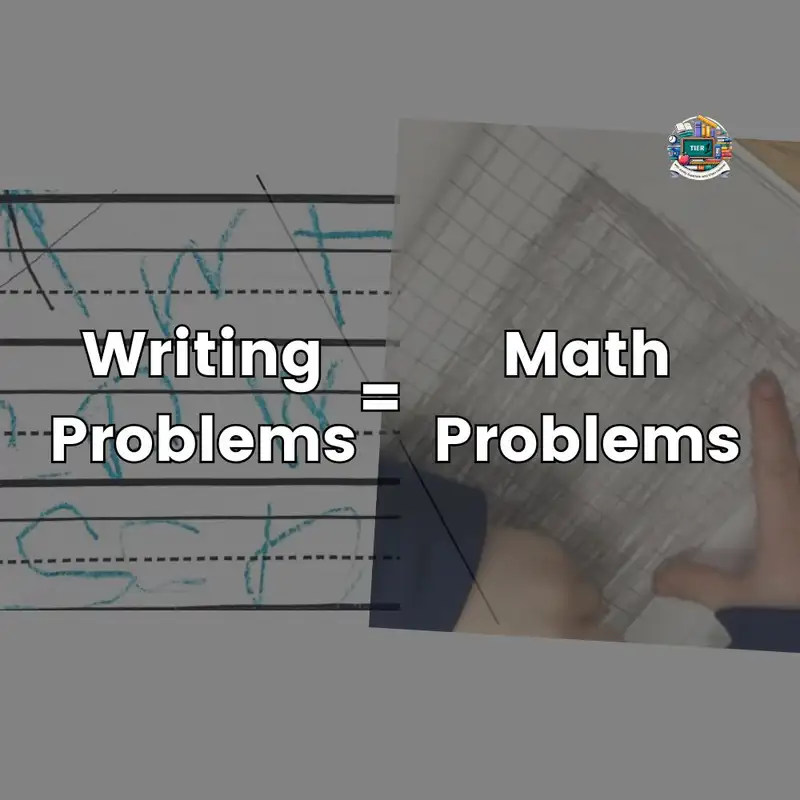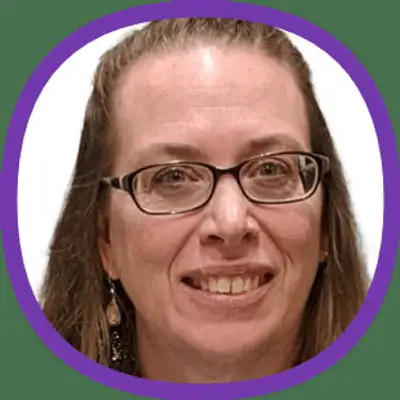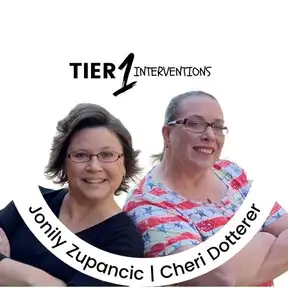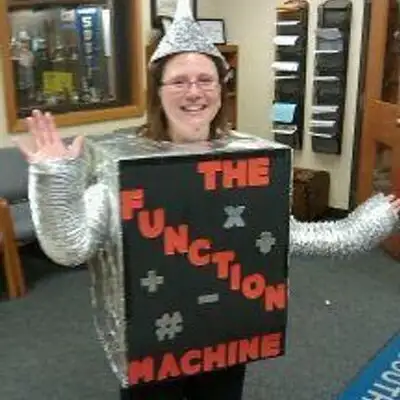
What If Math and Writing Struggles Are Actually the Same Problem?
Math DisConnect Day 1 Segment 2
===
. [00:00:00] I am Cheri Dotterer. I am an occupational therapist for the last 30 years.
I had kids who were reading above grade level and couldn't write. Not only were there, was it happening at home, it was happening with my clients. And I started reflecting upon myself and realized, oh my, that's me too.
So needed to figure out how to help myself in the process, help my kids, and help my students that had this unique thing where they could read and couldn't write. And I realized that not only is what I'm teaching kids who can read, kids who can't read also are benefiting. And then I met Ms. Jonily, and she brought my light to math as well.
I'm gonna let Jonily introduce herself. Yeah, so Jonily Zupancic, I am from Ohio, and math teacher by trade, was with the school district for 15 years and for the past eight, nine-ish [00:01:00] years, I've been a math coach and consultant for Mines on Math. Cheri and I have our worlds collided about four or five years ago.
And what this collision has done is brought together the medical world, so students that are diagnosed with A DHD dyslexia, learning disabilities et cetera, et cetera. Cheri's approach to therapy with those students and then me as a classroom math teacher approach to trying to serve these students.
And the combination of those two worlds is what we're gonna bring you this week. In this challenge, we are going to focus specifically on mathematics. However, many students who struggle with mathematics also have a combination of other learning disabilities. So we are gonna talk about all of the learning disabilities.
With a quick dot, the way we facilitate is [00:02:00] exactly what Cheri did. How many dots do you see? Take a guess. One of the things that students with disabilities struggle with all students with disabilities is estimation. Being able to understand how to give an answer like you all did in the chat. You all are very good estimators because the numbers were all fairly close together in the chat.
From our, especially our young students, that might give us an answer of 973 or 3000 just because they like saying that phrase. We know that they don't have any kind of sense of number And you're probably like Jonily. Yep. We knew that before we gave it to them. However, I want you to have a grab and go tonight.
A quick takeaway. Once you show an image, take it away. Have them estimate what is the [00:03:00] intervention, what is the gap filler? This is what I want all of you to walk away with at the end of this week. What is the grab and go teacher move facilitation language that we need to use to fix these deficits and.
You can correct me if I'm wrong. I get pretty opinionated here, but there is not any intervention program that I know of that I've seen that helps fill the estimation gap. Meaning if a student doesn't know how to estimate, it is true that with interactions over time, they can get better by hearing other students' answers, by counting, figuring out however the exact intervention is what I'm calling a too high, too low.
So if I asked you think about the number of dots that you saw, how many dots would [00:04:00] be too high? 3000 would be too high. How many dots would be a too low estimate? Seven would be too low. 10 would be too low. But the instructional strategy. This is important to understand the difference between a rich mathematical experience, an exercise that we give students, an intervention and the instructional strategy.
But the exact instructional strategy on how I facilitate getting better estimation is not just with the two high, two low, but what I call a risky too high and a risky too low. So let me have you put in the chat right now. What would be a risky too high for the purple dot image that you saw? A number that would be too high, but not too high, that it might actually be pretty close to how many dots there actually are.
Go ahead and type. [00:05:00] That's excellent. This is excellent. And again, one of our estimates, one of our guesses that you had was a hundred. So maybe a hundred wouldn't be the two risky, but maybe it would be one 20. By having students give a too high and too low, and a risky too high and too low, it forces their brain to work on how to estimate, not just, I'm just gonna give them a bunch of estimation over and over again all year long and hope it gets better.
Just like with fact fluency, whether you give time tests or believe in time tests, what? It doesn't matter. Here's my point. In giving students time tests like single digit multiplication or single digit edition timed test where we time, how long it takes to answer so many, or recall so many. By giving those over and over again, we can constantly assess what they know and don't know.[00:06:00]
But that in and of itself is not the intervention. It's not the instructional strategy like a two high or too low. So what we're gonna do this week is be very deliberate and intentional about the actual instructional strategy that's going to make a difference. And again, go grab your intervention resources tomorrow.
And when you come back tomorrow night, correct me if I'm wrong, but I do not know any intervention resource or program that's actually going to give us a plethora of the exact instructional strategies. It's gonna give us a lot of exercises and experiences and tasks and things like that, but it's not gonna give us the exact instructional strategies.
That's what Cheri and I have developed for all of you this week. So give me a risky, too low. I think you guys have the point of this, but I think it's [00:07:00] important to make your brains think about it. A risky, too low. A risky too. Oh, now the, okay, now these are good. Okay. Some risky too. Lows here. 65. 75. 25.
70. 75. 70. These are pretty risky, my friends. Okay. I like them. I like the risky two lows. These are really excellent. Now, we're not going to show you the image again tonight. I don't think we are, Cheri. I'm thinking Yeah, we are. We are. We are. All right. See it is. Okay. All right. We are gonna show you the image again tonight.
But before we do, because I like to build this sense of the, of wonder and curiosity. Remember those emotions at the beginning where our students and ourselves felt sad and frustrated and helpless and stupid and worthless? And [00:08:00] not only does quick dots level the playing field for all students, I use quick dots from kindergarten all the way through high school.
I also use quick dots in classrooms where we have brought, in some cases, resource rooms where we have students that have developmental disabilities that are not in the regular classroom for one reason or another. We've brought those students into the regular classroom. We've brought some of the pullout gifted students into the regular classroom.
We've brought all ability levels of students together, and quick dots is one of the only mathematical experiences that levels the playing field, honestly, because it doesn't matter what your estimate is through the too high, too low, everyone is learning how to better work your brain no matter what the ability level is.
And we can all have fun and be [00:09:00] joyful about mathematics. Now, when I don't show kids the image for a little while, the curiosity, the debate, the. Reasoning, the sense making. It's ongoing. When I don't finalize and let them count. Cheri says, we're gonna show you the image though again tonight. That's okay.
We won't let you got, we won't make you wait until tomorrow night. But you can see how quick dots not only has an effect on the deficits that students have and exactly how we fill those deficits, but we also want to be intentional this week about how we can have a positive effect on student emotion and confidence and also decrease their anxiety.
Cedric: This episode is part of our Quick Dots series. You can find the complete five day series inside disabilitylabs.com. Look for The Purple X or The Claw to get all the details of each Quick Dot pattern.
Next week, we will dig deeper into this [00:10:00] topic of making dot patterns to support kids in mathematics with and without disabilities.
Episode Video
Creators and Guests


